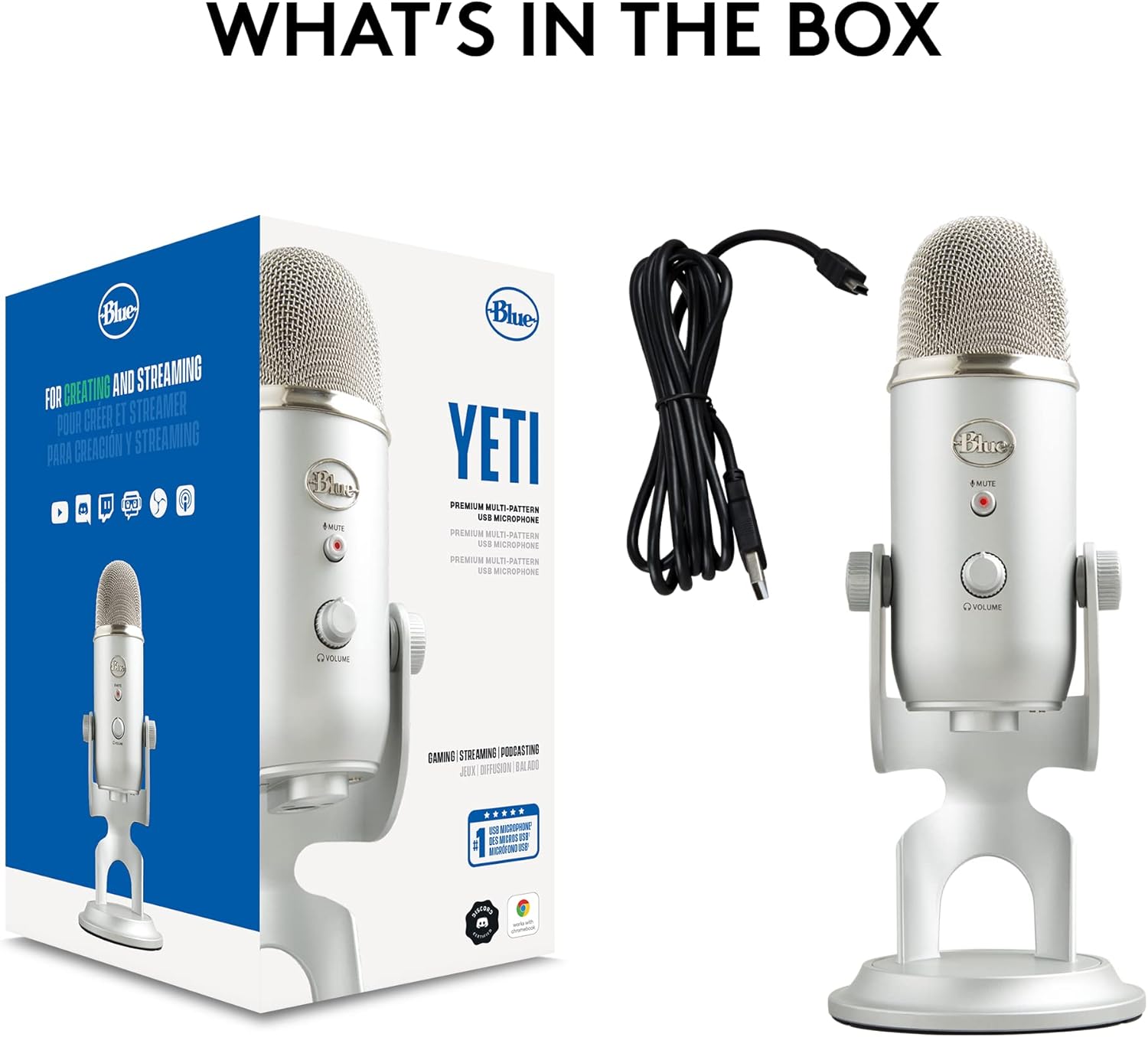Is Blue Yeti Good for Singing?
The Blue Yeti is a USB condenser microphone first introduced by Blue Microphones in 2009. It has remained popular due to its plug-and-play functionality, multiple polar pattern options, and reasonable price point. The standard Blue Yeti features:
- Four polar pattern modes (cardioid, omnidirectional, bidirectional, and stereo)
- 16-bit/48kHz resolution
- Zero-latency headphone monitoring
- Gain control
- Mute button
- Plug-and-play USB connectivity
Sound Quality

The Blue Yeti uses a condenser capsule design, which generally provides better sensitivity and frequency response compared to dynamic microphones. For vocals, this translates to:
Frequency Response: The Yeti has a frequency response of 20Hz-20kHz, covering the full range of human vocal frequencies. This allows it to capture both the low fundamentals of bass vocalists and the higher harmonics of soprano singers.
Clarity: The Yeti offers good clarity for its price range, capturing vocal details that cheaper USB microphones might miss. The condenser elements provide a bright, present sound that works well for many singing styles.
Warmth: While not as warm-sounding as higher-end studio condensers, the Yeti has a relatively balanced sound that doesn’t excessively thin out vocals. It tends to emphasize the mid-range frequencies where much of the vocal character resides.
Versatility via Polar Patterns
The Yeti’s multiple polar patterns are particularly useful for vocalists:
- Cardioid mode: Most useful for solo vocalists, as it records sound directly in front of the microphone while rejecting sound from the sides and rear.
- Bidirectional mode: Great for duets or vocal harmonization sessions.
- Omnidirectional mode: Useful for capturing room ambiance along with vocals for a more natural sound.
- Stereo mode: Can add dimension to vocal performances with spatial movement.
Ease of Use
For singers who don’t want to deal with audio interfaces and XLR setups, the Yeti offers significant advantages:
- Direct USB connection: No need for additional hardware
- Built-in gain control: Allows for quick adjustment of input sensitivity
- Zero-latency monitoring: Essential for singers to hear themselves without delay
- Simple setup: Doesn’t require technical expertise to start recording
Blue Yeti vs Alternatives
- Audio-Technica AT2020USB+: Generally considered to have a more natural sound than the Yeti, but with fewer features
- Rode NT-USB: Often preferred for its cleaner sound but lacks multiple polar patterns
- HyperX QuadCast: Popular among streamers but also works well for vocals with good off-axis rejection
For singers willing to invest in an audio interface, these XLR microphones can offer better vocal quality:
- Audio-Technica AT2020: The XLR version of AT’s popular condenser provides better quality than its USB counterpart
- Rode NT1: Exceptionally quiet with a natural sound that works well for most vocal types
- Shure SM58: A dynamic microphone that’s an industry standard for live vocals and can work well for recording in less-than-ideal spaces
Who Should Use the Blue Yeti for Singing?
Best For:
- Beginners: Singers just starting to record who need an affordable, easy-to-use solution
- Content creators: YouTubers, podcasters, or streamers who sing as part of their content
- Songwriters: Musicians who need to quickly capture vocal ideas with decent quality
- Remote collaboration: Singers participating in online projects where setup simplicity is valuable
- Practice recordings: Vocalists wanting to review their performances without complex equipment
Less Ideal For:
- Professional recordings: Singers creating commercial releases would benefit from higher-end equipment
- Touring musicians: Those who need a rugged microphone for various environments
- Very dynamic singers: Vocalists with extreme volume variations might struggle with the Yeti’s gain structure
- Loud environments: The Yeti’s sensitivity makes it challenging to use in noisy spaces
Final Thoughts: Is the Blue Yeti Good for Singing?
The Blue Yeti occupies a sweet spot in the market that makes it generally good for singing in specific contexts. It’s excellent for beginners, content creators, and those needing simplicity, while being merely adequate for professional applications.
The Blue Yeti doesn’t compete with high-end studio microphones, but it wasn’t designed to. Instead, it democratizes vocal recording by providing accessible quality that was once out of reach for many singers. With proper technique, environment control, and post-processing, the Blue Yeti can produce vocal recordings that sound surprisingly professional.